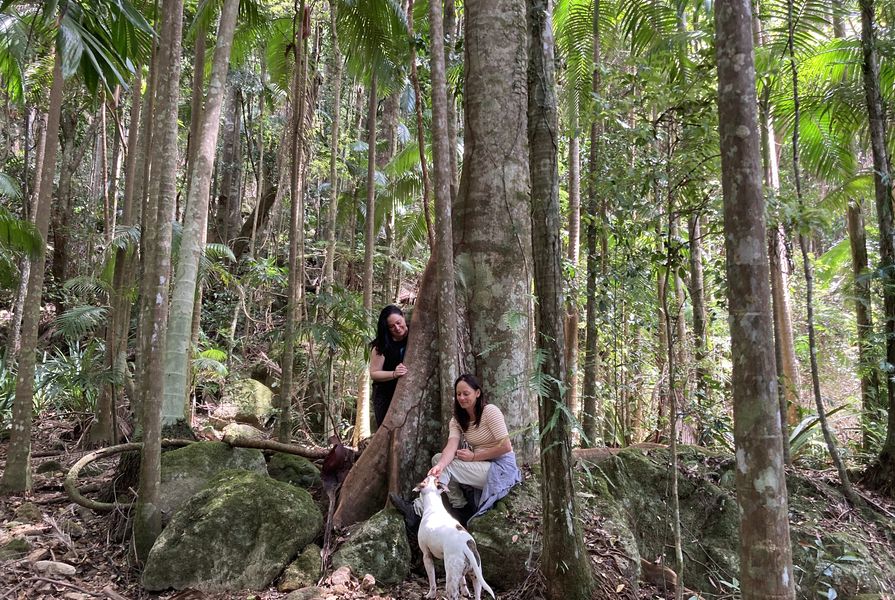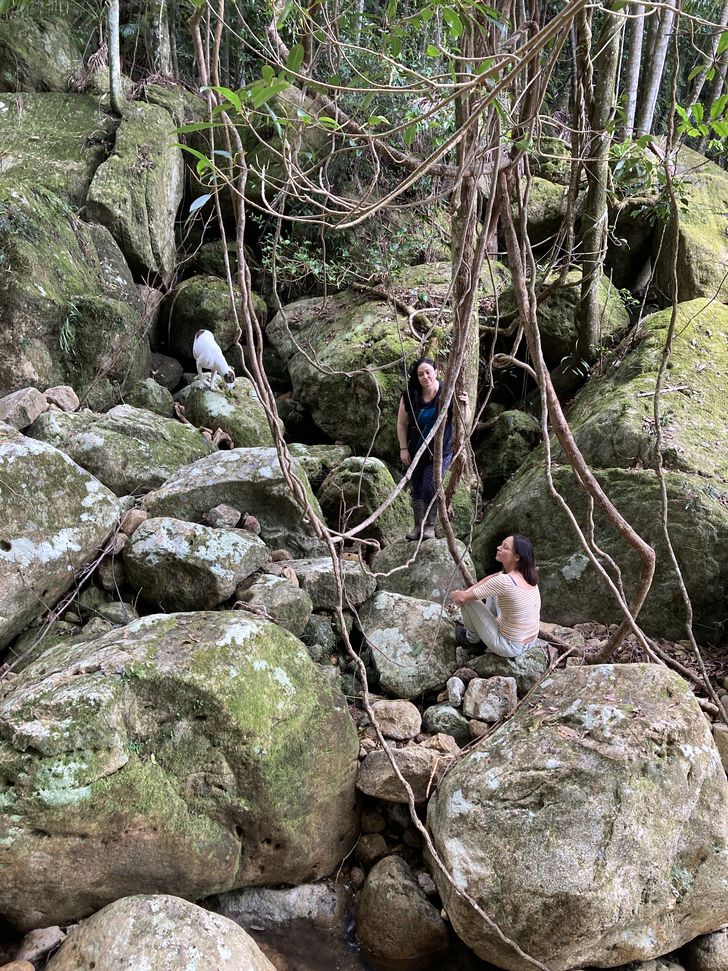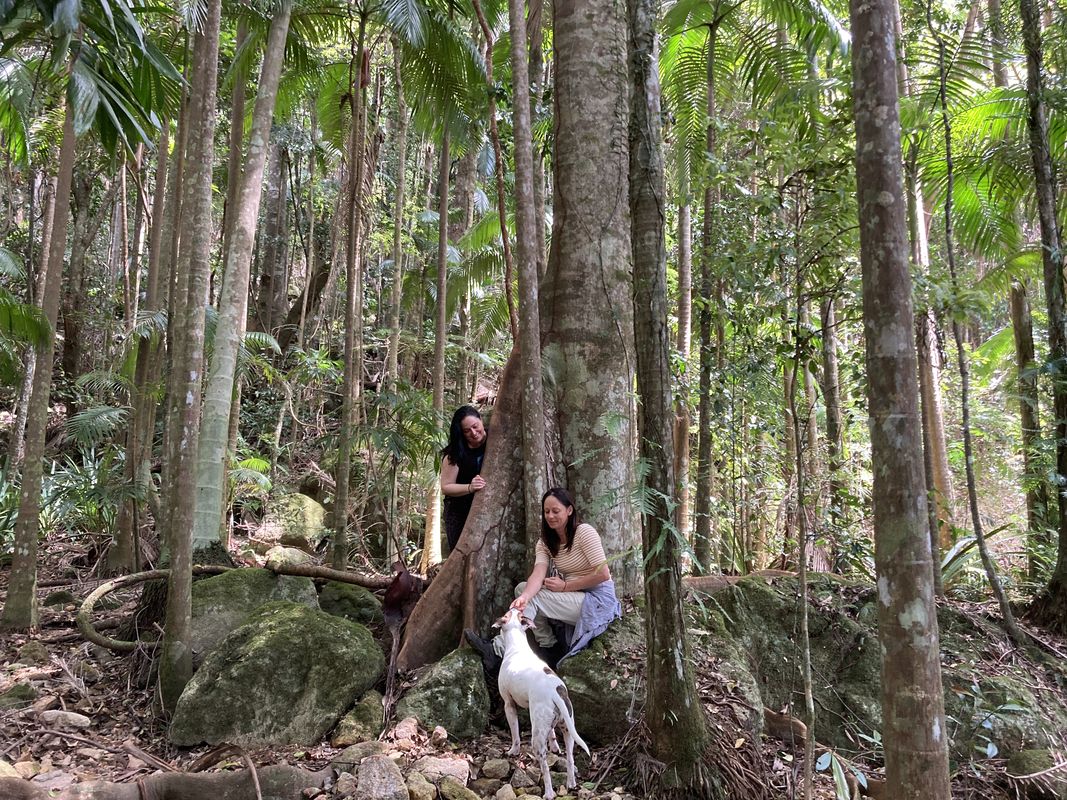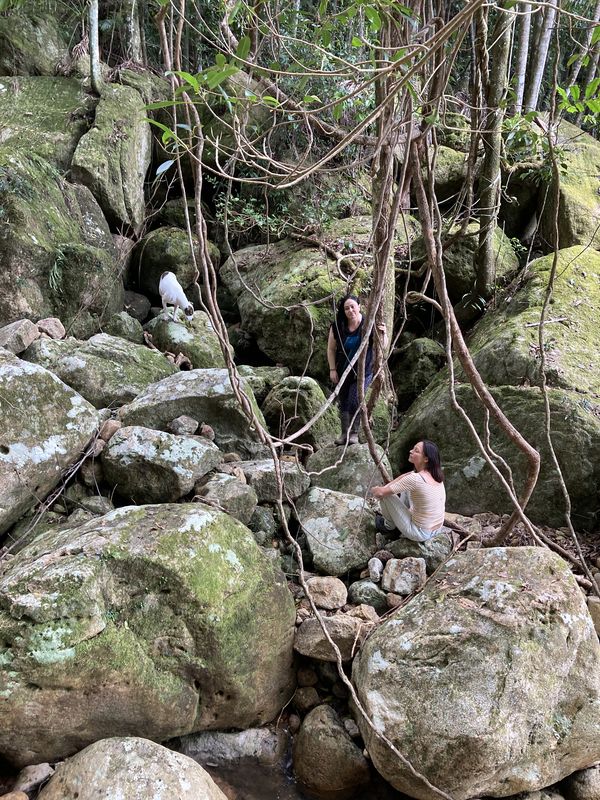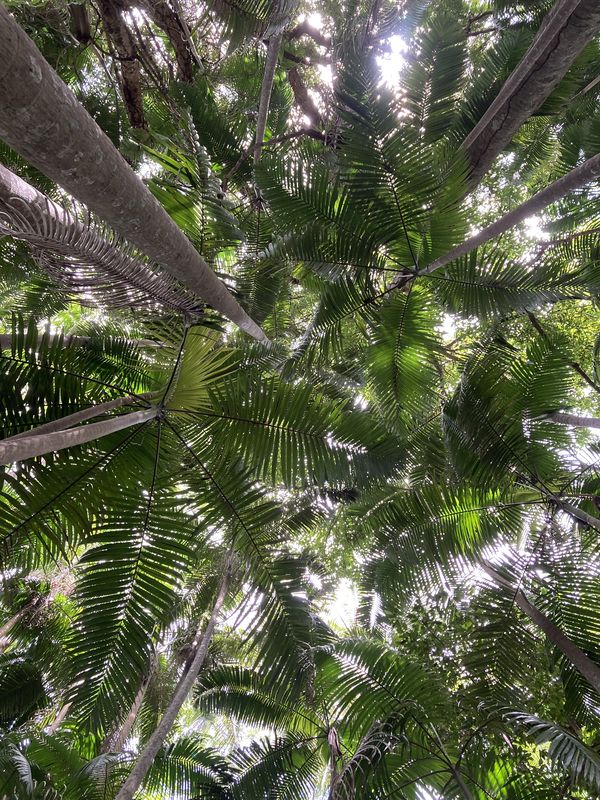I would like to share a little story with you.1
As children growing up on the Far North Coast of New South Wales, my sister and brother and I had relative freedom in our movements around the 60 acres of land on which we lived. For our safety, we were given some essential parameters by our parents and extended family. For instance, show respect for other creatures and life; everything has a right to be here, from a human to a spider, to a spider’s web. Of course, be aware of those creatures that might be considered “dangerous” to kids – give them warning of our presence, allow them time to escape. Step onto logs rather than over them to ensure our feet do not trample creatures seeking security behind.
Learning to be respectful led us to the next guideline: be observant. Be mindful of where we place our feet to cause as little damage as possible. Also, notice the changes in the environment, from one ecosystem to another, and how that means we might need to move or act differently. In some places, this required being fully grounded and walking quietly in single file, and in others, jumping raucously from rock to rock. It meant we had to be observant of the non-humans2 and more-than-humans3 around us, engage with the messages being sent to us, and be responsive. Watch carefully to see whether an animal is comfortable or scared, and if it’s scared, leave it alone.
Play, explore, learn. Be curious but do not get lost. If we did get lost, we were to retrace our steps by observing our own trail. We were taught to pay attention in the bush, observe where we went and re-observe on the way back. As we played and explored, we learned how to identify which foods we could safely eat, and so our instruction was to consume wisely. If we were unsure whether a food was edible, we were not to eat it. Or, if we were hungry, were to start by licking it, then waiting – sometimes for hours, or longer – before taking a little nibble and waiting again, and so on until we were sure it was safe. Do not take too much but enjoy our food and be grateful for where it came from, as it might not be there next time. Also, be patient; do not eat unripe foods or drink unclean water. Some things take time, and boredom is both part of being tolerant and a neglect of creativity.
A key instruction (especially for older children) was to look after each other, maintain a sense of responsibility toward each other and ensure everyone is well. The oldest should walk at the back to make sure everyone arrives safely. Do not leave anyone behind, continually communicate where you are going. Importantly, always listen, stay attuned and connected, not only to the sounds and sense of the land, but for our parents calling, or the sound of our mother’s powerful whistle, as that was when it was time to go home.
This story is about how I learned protocols and ethics from my family and from Country as a child. This is not the end of my learning; as I have grown and continued to learn as an adult, my childhood values have matured with me to encompass continuous learning. They also reflect the values of those whose work I have relied on as both a designer and a researcher, and the lessons Country has continued to share with me as part of my lifelong learning from and of Country. These values continue to inform my work:
- be respectful to Elders, Country and others
- observe and listen carefully, not only to words said but those not said
- allow room for thought and reflection, give people and stories space to develop
- be prepared to learn
- be grateful
- ensure reciprocally mutual benefits
- consume responsibly
- be open and transparent
- lead with care and from the rear
- maintain relationships.
Danièle and Siân Hromek, Boogarem Farm.
Image: Carlos Porras
What does this have to do with the built environment?
Recently, while working through a complex project with built environment associates, I was asked by a mindful colleague to help them learn to “be better.” This was after I became exasperated with the process. When considering the project through my worldview, it was clear that my highly qualified colleagues were unaware of the behaviour protocols that, in theory, should have been adopted when non-Indigenous people arrived at our shores more than 230 years ago (or indeed at any time since), and also that the systems their ancestors brought with them were still being steadfastly upheld in the broader society – as part of design processes, including in that particular project.
From early in the project, it was evident that I had a very different way of viewing, valuing and evaluating the work. The challenge was that the introduced systems we live and work within did not create space for my worldview and dissenting perspectives; those systems meant that my voice was able to be spoken over and my concerns explained away. It was these introduced systems, along with the processes and values they uphold, that left me frustrated and wondering how to share with my colleague how to “be better” in a society in which these very systems are so deeply entrenched that those within them are not even aware they are upholding them, let alone realizing the impacts they are having on the built environment today. Inevitably, this has led to cultural unsafety for me, over and over.
Those introduced systems do not understand that in my ways of knowing the world, a leader walks at the rear of the group to ensure that all arrive safely – meaning, for instance, that in a meeting, a leader speaks last. Those systems do not understand that many parts of the east coast of New South Wales are matriarchal Country – meaning that, unlike in patriarchal societies, men allow women to have the floor, including in methods of communication and negotiation (for instance, men actively seek out how to foreground women’s voices in projects, and female Elders always have the last say). Those systems do not understand that their ways of seeing the world have created trauma for the fragile ecologies and biodiversities of this continent and that continuing with business as usual is only going to further threaten the ecosystems on which we all rely.
Those who are living within these systems need to realize that they are responsible for maintaining the status quo. Instead, to make progress, they need to listen and learn before speaking or acting; at least until they know their place and the protocols of place, active deep listening is crucial. This means learning how to behave in a way that respects the protocols of culture and Country. It means giving space, taking a back seat, and creating safety for those whose voices have historically been silenced before their own voices are heard. It means privileging others who are unprivileged before privileging themselves. It also means understanding that the worldview through which they are peering has caused the environmental damage and trauma we are currently experiencing, and that that worldview needs to be carefully examined for its deficits.
The first lesson that non-Indigenous built environment professionals need to learn is that, in cultural ways, they are infants. In ways of being and knowing on this continent, they are toddlers. As such, their primary role is to listen, observe and learn. They have so much to learn before voicing their thoughts or opinions about this place. Their qualifications in the built environment come from a worldview that has enabled massive destruction that originated from another place; they have an extraordinary amount to understand before making further changes to the shared spaces in which we live.
Non-Indigenous built environment professionals should start considering how their worldviews have caused damage to the environment through design and through built form, and to challenge what they know about the built environment and the filter through which they have learned. Once they know who they are, once they genuinely understand their positionality in the world and have understood how their worldview has (mis)shaped the world and this continent in particular, once they have learned the appropriate protocols, then is the time to speak.
I share these protocols and ethics, along with this way of seeing the world, not only to help learning, but to create space for cultural safety.4
1. A version of this story was shared in my PhD titled The (Re)Indigenisation of Space: Weaving narratives of resistance to embed Nura [Country] in design (2019).
2. The term “non-human” refers to those entities who share Country and are not human. They may be breathing – for instance, flora or fauna – or non-breathing – for instance, geology or hydrology.
3. The term “more-than-human” references the interconnectivity between humankind, culture, animals, plants, geology, elements and other non-human/non-breathing entities. More-than-human recognizes the ecosystems within which all of these entities are intertwined, making them more than simply individuals; rather, they are completely reliant on one another. More-than-human includes human as a part of nature rather than separate from or holding authority over nature. More-than-human recognizes that entities that are not human hold equivalent agency in places and spaces as humans, and therefore must be considered in design and placemaking. Failing to consider non-humans and more-than-humans enables and causes siloed thinking and built environments that primarily look at those who “own” sites rather than the broader ecosystems, the diversities and biodiversities of places, and the future of places.
4. Danièle will discuss cultural safety in Architecture Australia, vol. 112, no. 1, Jan/Feb 2023.
